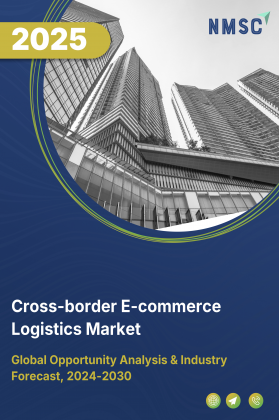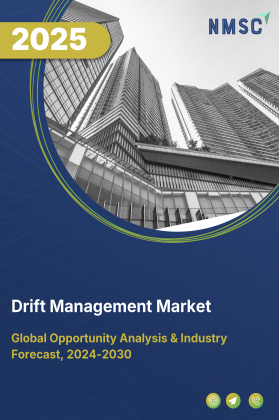
Cross-border E-Commerce Logistics Market by Service Type (Transportation Services, Warehousing & Fulfillment, Customs, Compliance & Clearance, Value-Added Services), by Technology (Digital Visibility & Real-Time Tracking Platforms, AI-Enabled Optimization & Predictive Analytics), by Business Model (B2C, B2B, B2B2C), by Delivery Type (Standard Delivery, Express), and by End User (Apparel & Fashion, Consumer Electronics, Others) – Global Opportunity Analysis and Industry Forecast – 2025–2030
Cross-Border E-Commerce Logistics Industry Outlook
The global Cross-border E-commerce Logistics Market size was valued at USD 153.37 billion in 2024, with an estimation of USD 192.48 billion in 2025 and is predicted to reach USD 599.25 billion by 2030 with a CAGR of 25.50% from 2025-2030. The sector is witnessing strong growth driven by the surge in global e-commerce sales, expanding trade agreements, and rapid urbanization.
Increasing digital adoption, multi-channel selling, and the rise of international marketplaces have amplified demand for reliable logistics services, including warehousing, customs clearance, last-mile delivery, and order tracking. Trade facilitation through free trade agreements and simplified customs regulations has further enabled smoother cross-border transactions.
Urbanization and improved infrastructure support faster deliveries and higher shipment volumes. However, diverse regulatory requirements, customs complexities, and evolving trade policies pose challenges. The integration of smart logistics solutions, leveraging AI, IoT, and real-time tracking, presents significant opportunities to enhance efficiency, reduce costs, and optimize international operations.
Surge in Global E-Commerce Sales Boost the Market Growth
The rapid growth of e-commerce platforms like Amazon, Alibaba, and Shopee has significantly fuelled international trade and the cross-border e-commerce logistics market demand. According to ITA, worldwide e-commerce sales for B2B businesses have been steadily rising year over year for the last decade, with the global B2B e-commerce market projected to reach USD 36 trillion by 2026. This growth is fuelled by the increasing digital adoption among businesses, a wider range of products available online, and the expansion of global marketplaces that connect sellers and buyers across borders.
As businesses increasingly sell internationally, the need for reliable, fast, and cost-effective logistics solutions has become critical. Cross-border logistics providers are seeing higher demand for services such as warehousing, customs clearance, last-mile delivery, and order tracking to ensure seamless international transactions. Additionally, the rise of mobile commerce, social commerce, and multi-channel selling strategies further amplifies the need for efficient logistics networks that handle large volumes of international shipments.
Expansion of Trade Agreements and Cross-Border Policies Drives the Market Demand
Free trade agreements (FTAs) and simplified customs regulations in regions like the EU, ASEAN, and North America have significantly reduced barriers, enabling smoother and faster cross-border transactions and enhancing logistics service adoption. These policies facilitate international trade by streamlining customs clearance, reducing paperwork, and lowering tariffs, which directly benefits e-commerce businesses and logistics providers.
In March 2024, the World Trade Organization (WTO), during its 13th Ministerial Conference (MC13), extended the e-commerce customs duty moratorium for another two years. This extension provides digital services companies and cross-border e-commerce businesses with temporary relief from the imposition of tariffs on electronic transmissions. The moratorium helps maintain the affordability and efficiency of international digital trade, even as progress under the WTO’s multilateral e-commerce work program remains slow.
By reducing trade barriers and providing regulatory clarity, these developments are crucial in boosting the adoption of cross-border logistics services. Businesses expand internationally with lower risk and cost, while logistics providers handle higher volumes of cross-border shipments efficiently.
Growing Urbanization Boost the Market Growth
Rapid urbanization across developing and emerging sectors is reshaping consumer behavior and driving the cross-border e-commerce logistics market growth. As more people migrate to urban areas, the concentration of consumers in cities creates higher demand for convenient, fast, and reliable online shopping options. This, in turn, fuels the need for efficient cross-border logistics to ensure products reach urban customers quickly and seamlessly.
Urbanization also encourages the development of advanced infrastructure, such as modern transportation networks, urban fulfillment centers, and last-mile delivery hubs. These improvements enable logistics providers to handle larger volumes of shipments, reduce delivery times, and offer enhanced service levels, making cross-border e-commerce more practical and attractive for both businesses and consumers.
Complex Regulatory and Customs Compliance Restrain the Market Growth
Cross-border shipments face diverse customs regulations, import/export duties, and documentation requirements across different countries. Variations in compliance standards, labeling rules, and inspection protocols lead to shipment delays, higher operational costs, and risk of penalties.
Logistics providers must invest in expertise, technology, and resources to manage customs efficiently, while businesses experience slower international expansion and limited market access. Frequent changes in trade policies, tariffs, and e-commerce regulations further complicate operations, making regulatory compliance a continuous and resource-intensive challenge. These complexities restrain the smooth adoption and growth of cross-border e-commerce logistics services globally.
Integration of Smart Logistics Solutions Creates Future Opportunity for the Market
The integration of smart logistics solutions, leveraging AI, IoT, and real-time tracking, offers a key growth opportunity for the cross-border e-commerce logistics market expansion. These technologies optimize route planning, automate warehousing, and provide end-to-end visibility, ensuring faster and more reliable deliveries.
By improving operational efficiency and enhancing the customer experience, logistics providers better manage international shipments, reduce costs, and attract global e-commerce businesses. As the market continues to expand, smart logistics solutions will play a pivotal role in shaping the future of cross-border trade.
Market Segmentations and Scope of the Study
The cross-border e-commerce logistics market report is segmented by service type, technology, business model, delivery type, end user, and region. By service type, it includes transportation services, warehousing & fulfillment, customs & compliance, and value-added services. By technology, it covers digital tracking platforms, AI optimization, blockchain-based compliance, and robotics & automation. Business models include B2C, B2B, and B2B2C/marketplace fulfillment. Delivery types comprise standard and express/same-day delivery. End users span apparel & fashion, electronics, automotive, healthcare, food & beverage, agriculture, chemicals, distributive trade, and others. Regional coverage includes North America, Europe, Asia-Pacific, and Rest of the World (RoW).
Geographical Analysis
North America is a well-established and highly competitive market for cross-border e-commerce logistics, fueled by widespread internet access, strong consumer demand for international products, and the prominence of major platforms such as Amazon, eBay, and Walmart. The region benefits from advanced infrastructure, including extensive road, rail, and air networks, as well as established fulfillment centers and automated warehouses, which support fast and reliable deliveries.
In September 2024, Amazon introduced Export Central, an exporting tool that enables sellers to reach customers across Europe, including in countries without localized Amazon stores. This tool eliminates the need to duplicate listings or register new accounts, simplifying cross-border sales and driving increased demand for efficient logistics solutions.
Asia Pacific is the fastest-growing region in the cross-border e-commerce logistics market share, driven by a tech-savvy population, rising smartphone adoption, and expanding e-commerce platforms such as Alibaba, Lazada, and Shopee. Countries like China, Japan, and South Korea lead in logistics innovation, with extensive fulfillment networks and investments in AI-driven supply chain management.
Mobile adoption plays a key role in the cross-border e-commerce logistics market growth. In rural areas, approximately 96.8% of individuals aged 15–29 used mobile phones at least once in the last three months for personal calls or internet access, while usage in urban areas reaches 97.6%. This widespread connectivity supports online shopping, mobile commerce, and engagement with e-commerce platforms, further driving demand for scalable cross-border logistics solutions.
Europe is a well-established market for cross-border e-commerce logistics, supported by a unified trade framework under the European Union (EU) that facilitates smooth transactions between member countries. High consumer demand for international products, combined with sophisticated transportation networks and advanced fulfillment infrastructure, enables efficient and timely deliveries across the region.
Logistics providers leverage automated warehouses, real-time tracking, and predictive analytics to enhance operational efficiency and customer satisfaction. Sustainability initiatives, such as green packaging and eco-friendly transport, are increasingly adopted to meet rising consumer expectations.
Additionally, the growth of SMEs and D2C brands expanding internationally drives demand for flexible logistics solutions. Streamlined customs procedures, cross-border e-commerce platforms, and technology-driven supply chain management continue to strengthen Europe’s position as a major hub for global e-commerce logistics.
Emerging regions, including Latin America, the Middle East, and Africa, are witnessing rapid growth in cross-border e-commerce, driven by increasing internet penetration, smartphone adoption, and urbanization. While infrastructure and logistics networks are still developing, investments in regional fulfillment centers, improved transportation systems, and partnerships with local courier services are enhancing delivery capabilities.
Companies entering these markets focus on tailored solutions for last-mile delivery, returns management, and customs clearance to navigate regulatory and operational challenges. As consumer demand for international products rises, these regions present significant opportunities for scalable and cost-effective cross-border logistics solutions
Strategic Innovations Adopted by Key Players
Key players in the cross-border e-commerce logistics industry are focusing on the integration of advanced technologies, innovative automation solutions, and immersive training programs to enhance operational efficiency and service quality.
-
In June 2025, Amazon invested in AI-driven logistics, developing multi-tasking warehouse robots and predictive delivery mapping to enhance operational efficiency.
-
In June 2025, Maersk has introduced VR training programs for offshore vessel crews, focusing on safe operations and reducing environmental impact.
-
In April 2025, GXO Logistics piloted humanoid robots in warehouses, aimed to automate tasks such as moving containers and recycling materials, with early trials showing promising results.
Key Benefits
-
The report provides quantitative analysis and estimations of the industry from 2025 to 2030, which assists in identifying the prevailing cross-border e-commerce logistics market opportunities.
-
The study comprises a deep-dive analysis of the current and future cross-border e-commerce logistics market trends to depict prevalent investment pockets in the sector.
-
Information related to key drivers, restraints, and opportunities and their impact on the market is provided in the report.
-
Competitive analysis of the key players, along with their market share is provided in the report.
-
SWOT analysis and Porters Five Forces model is elaborated in the cross-border e-commerce logistics market study.
-
Value chain analysis in the market study provides a clear picture of roles of stakeholders.
Cross-border E-commerce Logistics Market Key Segments
By Service Type
-
Transportation Services
-
Cross-border freight transport
-
Transportation management & freight forwarding
-
-
Warehousing & Fulfillment
-
International warehousing & bonded distribution
-
E-commerce fulfillment
-
-
Customs, Compliance & Clearance
-
Value-Added Services
-
Returns management / reverse logistics
-
Tech-enabled logistics
-
By Technology
-
Digital visibility & real-time tracking platforms
-
AI-enabled optimization & predictive analytics
-
Blockchain-based compliance & traceability
-
Robotics & automation in customs / warehousing
By Business Model
-
B2C (Direct to Consumer)
-
B2B (Enterprise Trade Logistics)
-
B2B2C / Marketplace Fulfillment
By Delivery Type
-
Standard Delivery
-
Express / Same-Day Delivery
By End User
-
Apparel & Fashion
-
Consumer Electronics
-
Automotive & Manufacturing
-
Healthcare, Pharmaceutical & Beauty
-
Food & Beverage
-
Agriculture, Oil & Gas, Chemicals
-
Distributive Trade, Construction
-
Others
By Region
-
North America
-
The U.S.
-
Canada
-
Mexico
-
-
Europe
-
The UK
-
Germany
-
France
-
Italy
-
Spain
-
Denmark
-
Netherlands
-
Finland
-
Sweden
-
Norway
-
Russia
-
Rest of Europe
-
-
Asia-Pacific
-
China
-
Japan
-
India
-
South Korea
-
Australia
-
Indonesia
-
Singapore
-
Taiwan
-
Thailand
-
Rest of Asia-Pacific
-
-
RoW
-
Latin America
-
Middle East
-
Africa
-
Key Players
-
FedEx Logistics
-
UPS Supply Chain / Trade
-
DHL eCommerce / Express Commerce
-
Amazon
-
CEVA Logistics
-
DSV A/S
-
Kuehne + Nagel
-
SEKO Logistics
-
XPO Logistics
-
C.H. Robinson
-
Nippon Express
-
GXO Logistics
-
Singapore Post
Report Scope and Segmentation
|
Parameters |
Details |
|
Market Size in 2025 |
USD 192.48 Billion |
|
Revenue Forecast in 2030 |
USD 599.25 Billion |
|
Growth Rate |
CAGR of 25.50% from 2025 to 2030 |
|
Analysis Period |
2024–2030 |
|
Base Year Considered |
2024 |
|
Forecast Period |
2025–2030 |
|
Market Size Estimation |
Billion (USD) |
|
Growth Factors |
|
|
Countries Covered |
28 |
|
Companies Profiled |
15 |
|
Market Share |
Available for 10 companies |
|
Customization Scope |
Free customization (equivalent up to 80 working hours of analysts) after purchase. Addition or alteration to country, regional, and segment scope. |
|
Pricing and Purchase Options |
Avail customized purchase options to meet your exact research needs. |

















 Speak to Our Analyst
Speak to Our Analyst

























